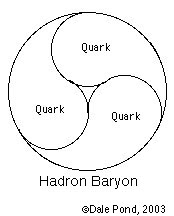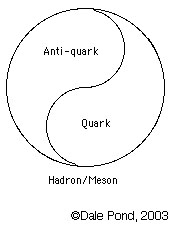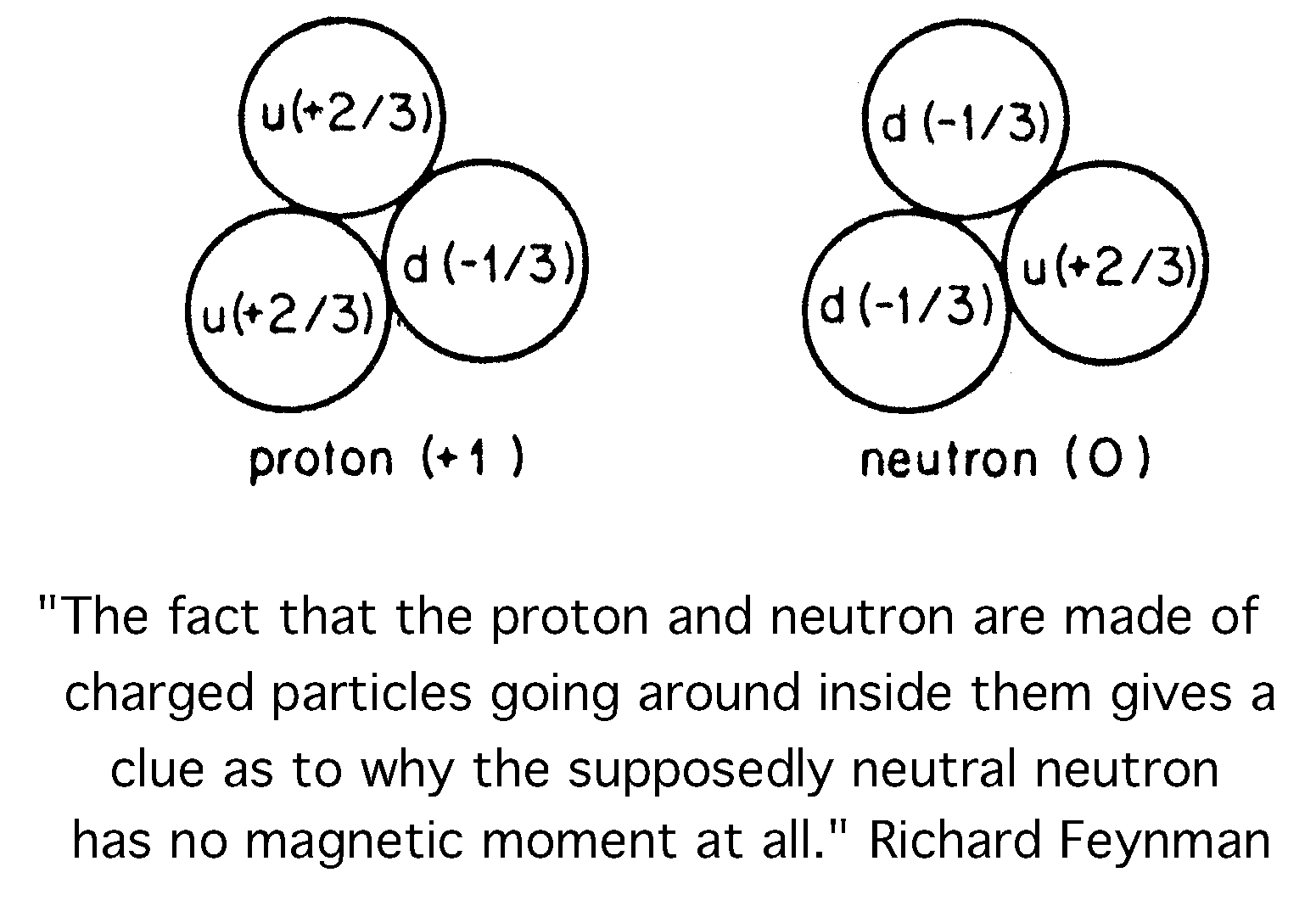

hadron - any elementary particle that interacts strongly with other particles
Any particle that participates in the strong interactions.
One prominent representative of the lepton species, which comes in three families, each with an electrically charged lepton and a neutral neutrino, is the electron. It is known to play the all-important role in chemical and electrical phenomenoa. According to present-day knowledge, the leptons are elementary, i.,. are indivisible and have no substructure.
The proton (and neutron), i.e., nuclear matter, on the other hand, has been shown to be composed of more elementary units, the quarks. Supposedly six different kinds of quarks exist, again grouped in three families, in complete symmetry to the leptons. Five of these quarks have been found, and recent experimental evidence exists for the sixth quark. Only the two members of the first family are needed for "ordinary" nuclear matter, the "u" and the "d" quark. However, the quarks seem to always be bound together to form the nuclear particles, called hadrons, and never have been observed as free particles: Three such quarks make up the proton, two u quarks and one d quark, while the neutron consists of one u quark and two d quarks.
Hadrons containing the heavier quarks, s, c, and b have also been observed. These particles, however, have very short lifetimes and are being produced under "natural" condition[s] mostly in reactions of cosmic rays with nuclei in the terrestrial atmosphere. (Trefil, James S.; From Atoms to Quarks - An Introduction to the Strange World of Particle Physics; Charles Scribner's Sons, New York, 1980)

CERN's discovery of the three new exotic hadron particles may revolutionize physics.
In 2022, scientists at the Large Hadron Collider (LHC) announced the detection of two tetraquarks and one pentaquark exotic subatomic particles that defy traditional models. These aren’t your everyday protons and neutrons. They’re made of four and five quarks, pushing the boundaries of what we thought we knew about matter.
What’s even more exciting? These particles were uncovered shortly after the LHC’s major upgrade, which allowed it to collide protons at a record energy of 13.6 tera-electronvolts. While they technically fit within the Standard Model of physics, their strange behavior and makeup could hint at deeper, undiscovered layers of the universe—possibly even offering new clues about dark matter. Scientists believe this could just be the beginning of a new era of particle exploration.
CERN's third LHC run is expected to produce more data than its previous 13 years combined. This means we may be on the verge of even more groundbreaking discoveries that challenge how we understand the universe. Exotic hadrons, dark matter, the very building blocks of reality everything's on the table now. Buckle up, because physics just got a lot more interesting. [7/21/25]

Figure 4.14 - Feynman's Triplet Structures of the proton and neutron. (from QED)
(click to enlarge)

See Also
Atomic Triplet
Boson
Fermion
Figure 1.9 - Keelys Molecular Morphology
Figure 4.12 - Keelys Formative Structural Dynamic Morphology
Figure 7.6 - Keelys Triune Morphology
Figure 7.7 - Keelys Morphology - Infinite Subdivision of Matter
Figure 7B.06 - Rotating Triplets Animation
Figure 7B.09 - Feynmans Triplet Structure of Photon
Hadron
Quark
Table 15.02 - Triune Polar Streams
triune polar flows
Triune States of Matter and Energy
